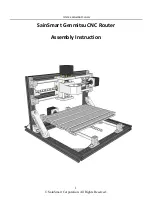
20: Configuring OSPF (Open Shortest Path First)
_______________________________________________________________________________________________________
_______________________________________________________________________________________________________
© Virtual Access 2018
GW6600 Series User manual
Issue: 1.7
Page 198 of 519
OSPF routers will only become neighbours if the following parameters within a Hello
packet are identical on each router:
•
Area ID
•
Area Type (stub, NSSA, etc.)
•
Prefix
•
Subnet Mask
•
Hello Interval
•
Dead Interval
•
Network Type (broadcast, point-to-point, etc.)
•
Authentication
The Hello packets also serve as keepalives to allow routers to quickly discover if a
neighbour is down. Hello packets also contain a neighbour field that lists the router IDs
of all neighbours the router is connected to. A neighbour table is constructed from the
OSPF Hello packets, which includes the following information:
•
The router ID of each neighbouring router
•
The current ‘state’ of each neighbouring router
•
The interface directly connecting to each neighbour
•
The IP address of the remote interface of each neighbour
20.1.3
OSPF designated routers
In multi-access networks such as Ethernet, there is the possibility of many neighbour
relationships on the same physical segment. This leads to a considerable amount of
unnecessary Link State Advertisement (LSA) traffic. If a link of a router were to fail, it
would flood this information to all neighbours. Each neighbour, in turn, would then flood
that same information to all other neighbours. This is a waste of bandwidth and
processor load.
To prevent this, OSPF will elect a Designated Router (DR) for each multi-access
networks, accessed via multicast address 224.0.0.6. For redundancy purposes, a Backup
Designated Router (BDR) is also elected.
OSPF routers will form adjacencies with the DR and BDR. If a change occurs to a link,
the update is forwarded only to the DR, which then forwards it to all other routers. This
greatly reduces the flooding of LSAs. DR and BDR elections are determined by a router’s
OSPF priority, which is configured on a per-interface basis (a router can have interfaces
in multiple multi-access networks). The router with the highest priority becomes the DR;
second highest becomes the BDR. If there is a tie in priority, whichever router has the
highest Router ID will become the DR.
















































